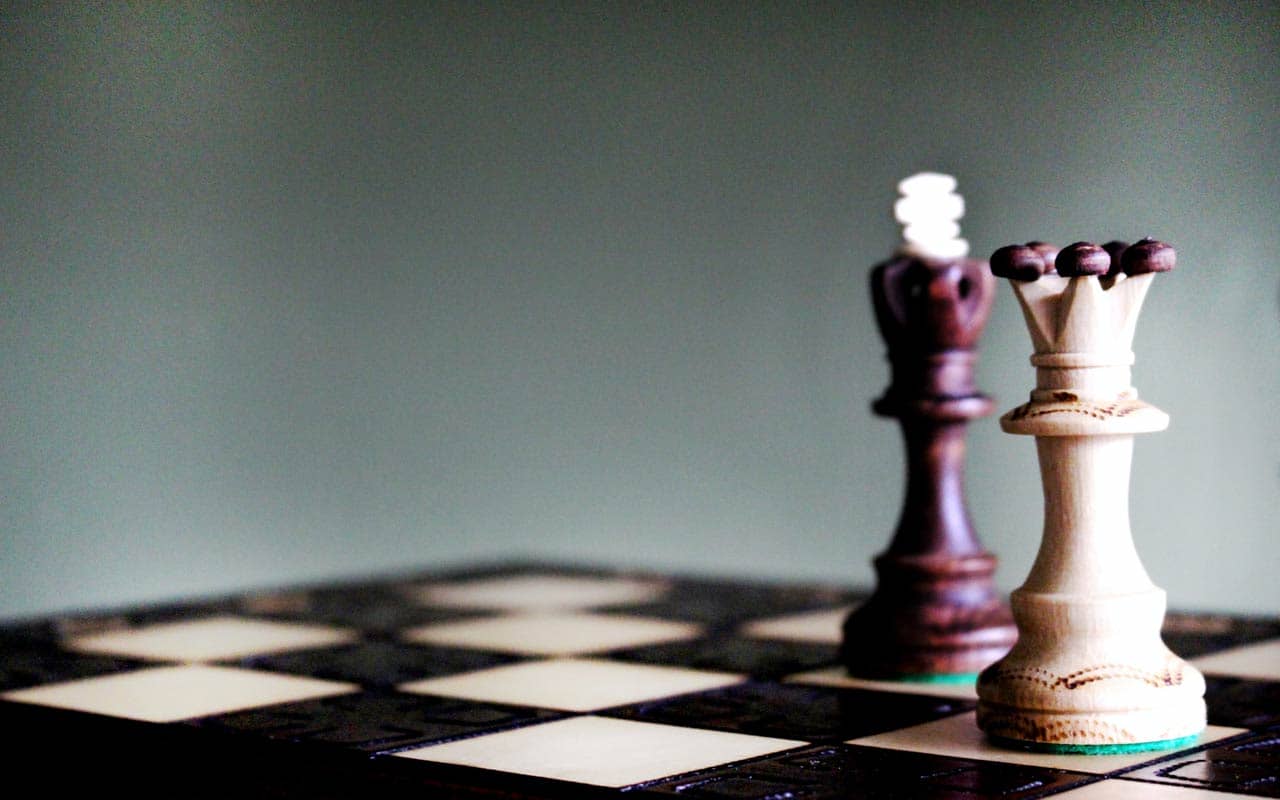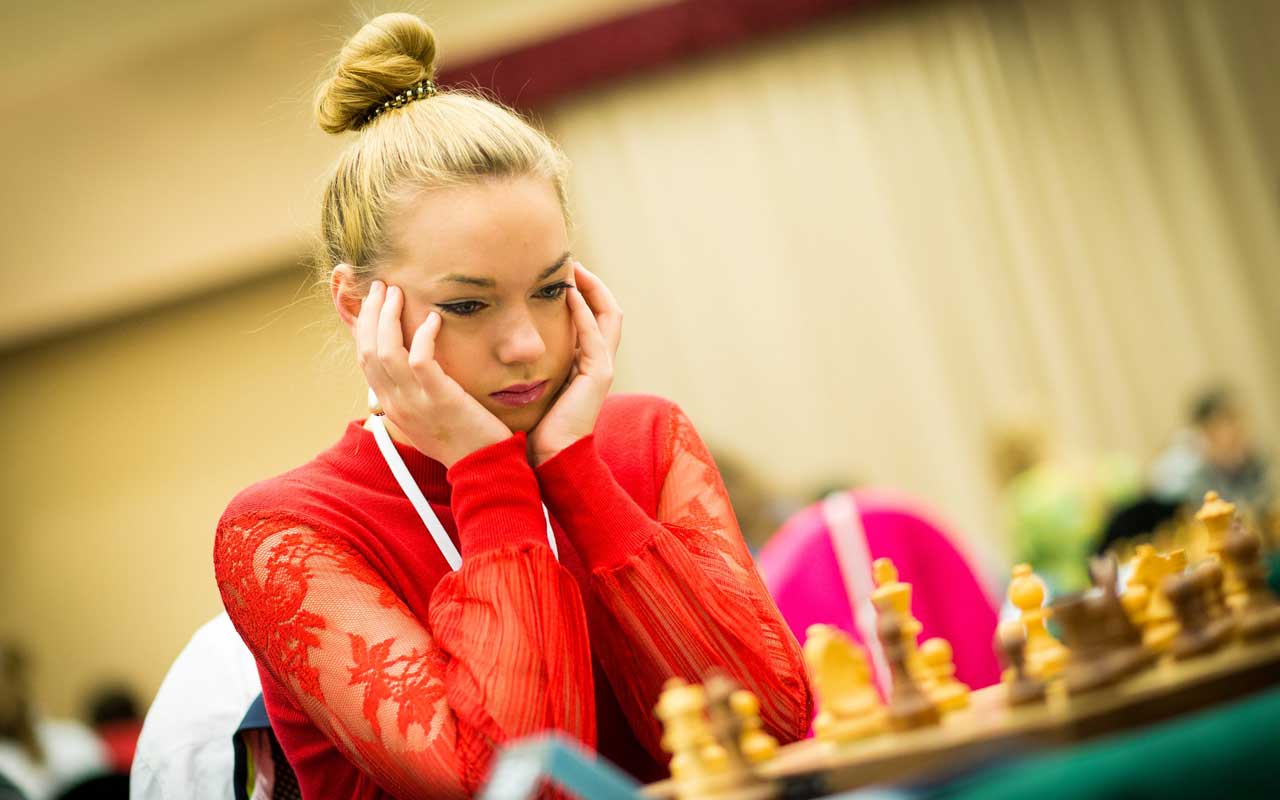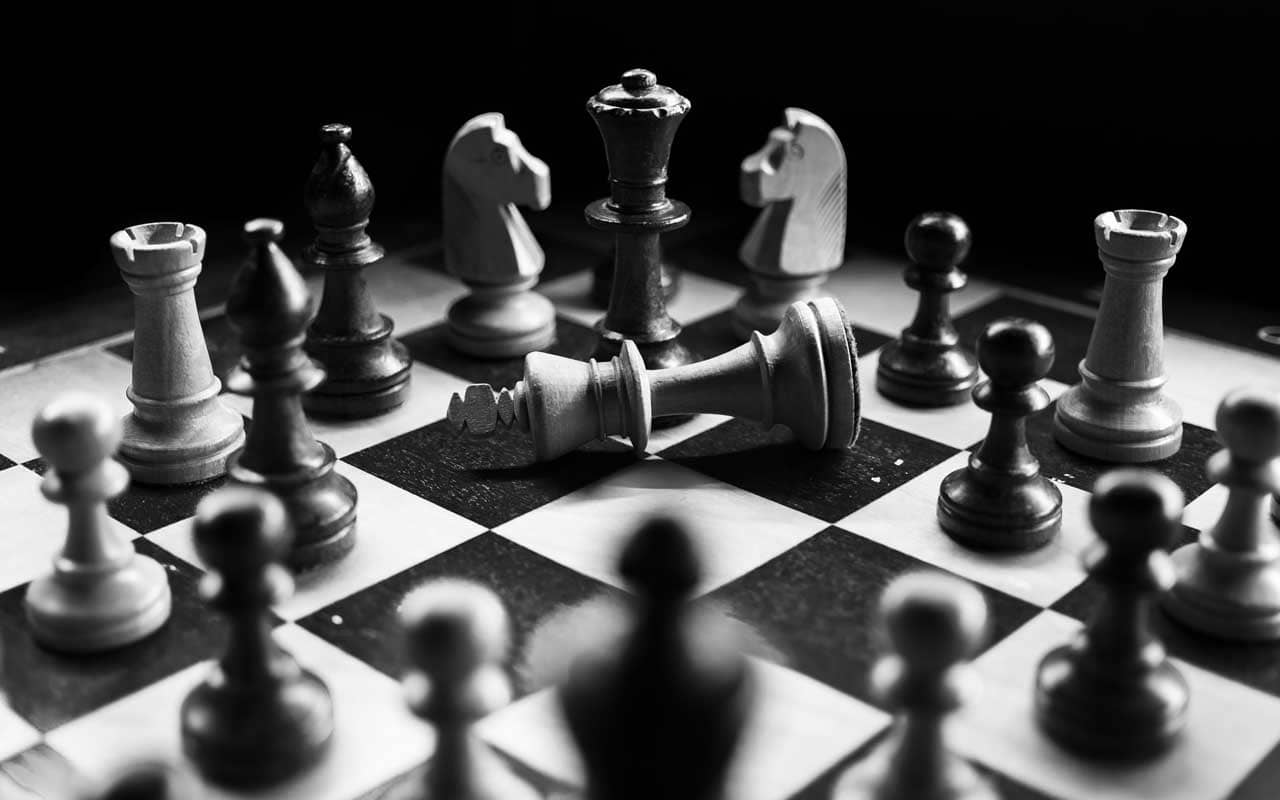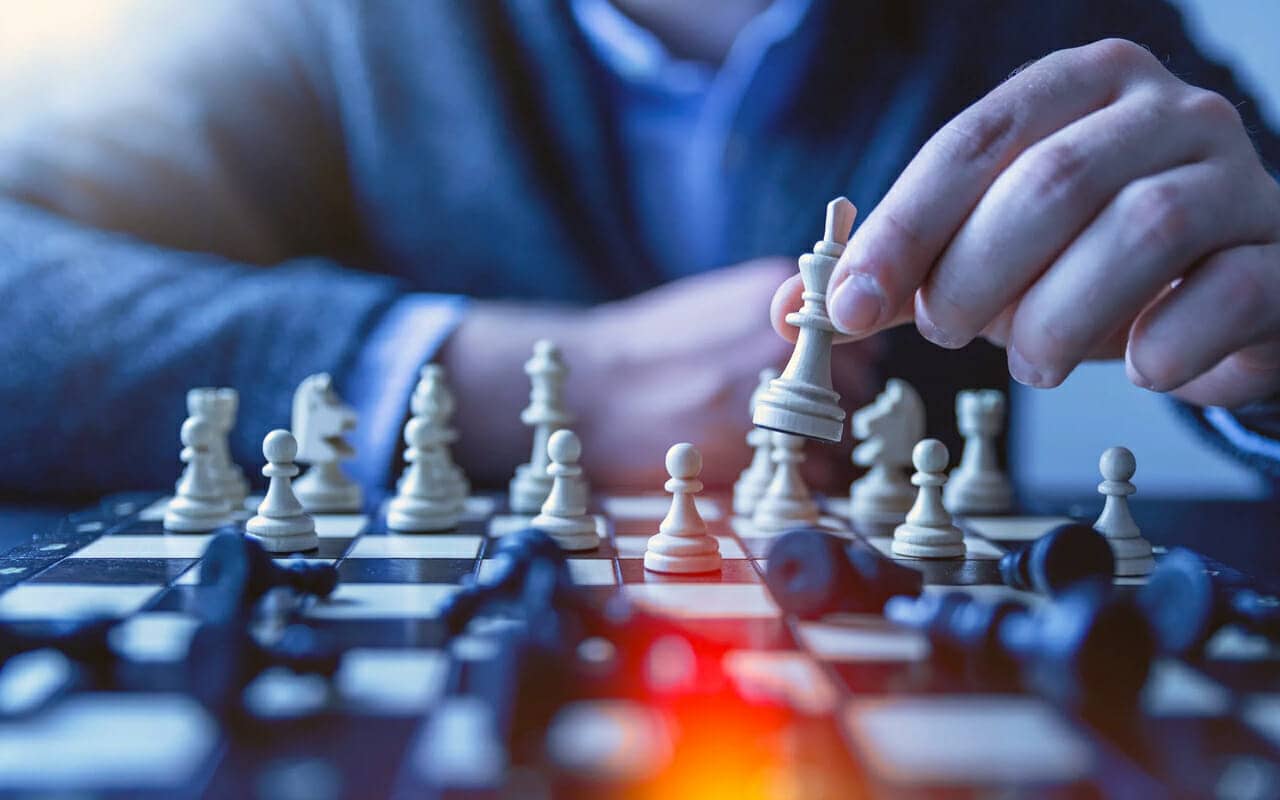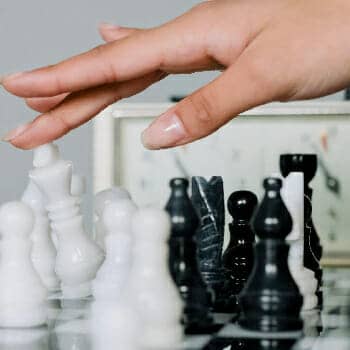 How long it will take you to learn chess depends on a few factors.
How long it will take you to learn chess depends on a few factors.
For example, it depends on what you mean by “learn.”
Do you want to have fun as a hobby chess player?
Or do you want to become a grandmaster?
Knowing your goal from the beginning will help you determine the best possible answer.
You’ll also get a boost by committing to the long term, whether you only want to play as an amateur or reach pro levels.
After all, even the occasional player will get more pleasure out of the game by continually developing knowledge of the game.
That means you should never worry about learning the game taking too long or being difficult.
So with that in mind, let’s have a look at how long it takes to learn chess for these different goals.
How Long Does It Take to Get Good at Chess?
Many people will tell you that it takes 1-2 years of daily practice to become a solid chess player.
Within this period of time, they advise at least one hour per day.
This is not a bad metric for most of us. However, with deliberate practice, many can learn much faster. In fact, during the pandemic, many did. Chess has undergone an explosion in popularity ever since.
Using memory techniques, you can memorize the basic rules of chess very quickly.
Then, playing as much as you can, as often as you can is going to be the greatest good.
But ultimately, you need to define “good at chess” for yourself.
Even the best chess master has artificial intelligence to deal with in our era. Along with the rise of computer technologies, there are increasingly sophisticated ways that people cheat in chess.
All of these factors mean that chess is a lot like other sports, and even other performance-based skills like music: Practice takes a lifetime. No one is an exception to this rule.
How Long Does It Take to Become a Master at Chess?
When it comes to reaching levels of mastery, there does appear to be a basic pattern.
The best way to see it is to look at the number of years actual grandmasters took to achieve their heights.
- Magnus Carlsen – Approximately 8 years
- Garry Kasparov – Approximately 10 years
- Anatoly Karpov – Approximately 8 years
- Bobby Fischer – Approximately 7 years
There are many more grandmasters, but the average here is 8.5 years. This is representative of most people who start playing chess at a young age.
You might be able to achieve grandmaster status just as fast at an older age, but there will be factors that work against you. For example, you may have a career or family (or both) that require levels of attention and energy younger players are able to direct solely at chess.
Learn How To Play Chess In 10 Steps
There are countless books on how to learn chess. Pretty much all of them include the following steps, the same steps I followed when my friend Rick taught me the game back in elementary school.
Step One: Learn the Chessboard
Chess involves two players taking turns making their moves on a board with 8 rows, each containing 8 squares. Each and every square is used in the game.
Half of the squares are white and the other half black. The chess pieces also follow this color scheme. The player using the white pieces is called “White.” The player using the black pieces is called “Black.”
You set up the board so that each player has a white-colored square to their right. The vertical rows are called “files” and the horizontal rows are called “ranks.”
Step Two: Learn the Pieces
Each player starts with 16 pieces:
- 1 King
- 1 Queen
- 2 Rooks
- 2 Bishops
- 2 Knights
- 8 Pawns
Step Three: Learn How The Pieces Move
The rules are quite simple:
- The King can only move on square at a time in any direction. He can never move where he can be captured by the opponent. He also cannot move to a square that is already occupied by one of the other pieces on his side.
- The Queen is the strongest piece. Like the King, she can move in any direction. But she can move as far as she wants unless she is obstructed by another piece. Otherwise, she can capture any piece.
- The Rook can move vertically and horizontally, but not diagonally. It can capture any piece that is within its range of movement.
- The Bishop can move diagonally, but not vertically or horizontally. The Bishop can only capture other pieces horizontally as well.
- The Knight moves in an L-shaped pattern of three squares. He can leap over other pieces, making this perhaps the most unique piece on the board.
- Pawns move in only one direction: forward. From its original position, a pawn can move two squares forward. But once it has made its initial move, it can only move one square at a time.
Step Four: Learn Openings
It’s easy to memorize chess openings. The more you commit to memory from the beginning, the more you’ll enjoy playing the game.
Step Five: Learn How To Win
You win chess by attacking your opponent’s King. Once you have the King in a position where it is impossible for the piece to evade capture, you have achieved checkmate.
Whenever a King is attacked – or checked – the piece may have a few ways to get out of check.
- Capture the piece checking it.
- Moving out of the line of attack
- Placing a piece between the King and the attacking piece
Checkmate happens when the King cannot make any of these moves, or when doing so would cause the King to move into check.
Step Six: Study How Different Pieces Check the King
There are many guides that will show you the chessboard in different configurations. It’s useful to look at what checkmate looks like when one or more pieces have gotten the King into this kind of trouble.
Step Seven: Understand the Relative Value of Your Pieces
As you continue to play, it’s very helpful to understand the value of your pieces.
You will have to trade your pieces in order to play the game at some point, but there’s a difference between a wise sacrifice and an unnecessary mistake.
For example, the Rook is stronger than the Bishop and the Knight. But to lose any of these in exchange for a pawn is a suboptimal transaction.
This is because you’re ultimately losing your own attacking power while strengthening your opponent. Many people wind up resigning long before they even get into checkmate because they see that their decisions have made it inevitable.
Step Eight: Practice Controlling the Center Squares
There are many theories, but to speed up your path to mastery, this is one of the most important ones.
A good opponent will give you plenty of bait away from the center. But when you stop and study the positions and analyze your opportunities vs. the threats, you can often find away to make progress towards controlling the center.
Step Nine: Learn the Special Moves
One great move you can use to get your King into a safe position is called Castling. Although it technically involves two moves, it is considered a single move.
There are nuances to how it can be done, so it’s important to beef up on your knowledge of Castling as soon as you can.
You can also learn Pawn Promotion. If a Pawn reaches the eighth rank, it must be replaced by a Queen, Rook, Bishop or Knight of its own color.
Promotion to a Queen is known as “queening.” Switching in any of the other pieces is called underpromotion.
Although it is relative rare, there is also capturing en passant. By knowing this option, you will achieve mastery much faster.
Step Ten: Understand Drawn Games
There are a few ways chess games wind up in a draw:
- Agreement: both players agree to a draw due to time running out, neither player seeing a possible win or some other reason.
- Material advantage, such as two Knights against one King.
- Move repetition: After the same move has taken place twice, one player can draw before or after making the third reptition.
- Fifty-move rule: Although rare, if after 50 moves, no piece has been captured and no Pawn moved, a draw can be called.
- Perpetual check: A player can call a draw if it is impossible to stop endlessly checking the opponent’s King.
- Stalemate: This occurs when a player’s king is not in check, but there are no legal moves left to make.
7 Tips to Get Good at Chess Fast
Now that you’ve learned the basics, here are some ways to speed up the process or absorbing everything we’ve just covered.
One: Practice Regularly
The exact amount of time you’ll need to practice is contextual.
More is more, but you can also get a lot more out of your time if you journal about your practice. It will boost your logical thinking about the decisions you’ve made, even if your actual game time is limited.
Two: Focus On Tactics
The key tactics to learn in chess are:
Three: Review Your Games
I’ve already suggested that you keep a chess journal. You can also use a Chess Engine to help with analysis.
Either way, look for blunders where you or your opponent missed opportunities or made suboptimal moves.
You can also check your overall piece activity and analyze parts of the game where you achieved favorable positions.
Endgame analysis is also worth doing often.
Four: Study Your Use of Time
The amount of time you take to make your moves affects your opponent. Just because you’ve decided on your next move doesn’t mean you have to take it if you think waiting a bit longer might help wear your opponent down.
On the other hand, practice not looking like you’re in trouble when you do need to spend more time on working out critical moves.
Five: Work on Chess Puzzles
There are many chess puzzles that will help you practice specific chess skills.
Non-chess brain exercises can be helpful too, including mental calculation tactics. If you don’t know him, check out the multiple mentality routines taught by Harry Kahne.
Six: Challenge Stronger Opponents Before You’re Ready
Many people never get better because they wait too long to take on hard challenges.
But there are many opportunities to play against stronger chess enthusiasts. You’ll learn a lot that way.
Seven: Engage with Other Players
The Internet has made it easy to connect with other chess players. Discuss with them often and learn from their experiences.
Although it’s fun and often useful to lurk on forums, forming your own questions in a real-time discussion exercises your brain in powerful ways. It will help you understand everything you need to know about chess much faster.
Is Chess Hard to Learn?
Not really, but certain moves, like capturing en passant can take a bit longer to understand than the basics.
The important thing is that you dive in, play and study consistently and have a community around you to accelerate your learning.
And if you need more help with the memory aspects, get my Free Memory Course now:
It will help you remember all of the chess moves and chess terminology we discussed today.
And with a sharper memory, you’ll be a grandmaster in no time, if that is your goal.
Related Posts
- How Hard Is It to Learn Italian? The Best Answer & Learning Tips
Is learning Italian easy? Potentially, yes. But only if you rig the game right based…
- How to Remember Choreography: 7 Tips For Learning Dance Moves Fast
If the standard advice about how to remember choreography isn't helping you memorize dance moves,…
- The Most Controversial Language Learning Technique In The World
In this episode of the Magnetic Memory Method Podcast ... controversy about using mnemonics in…

